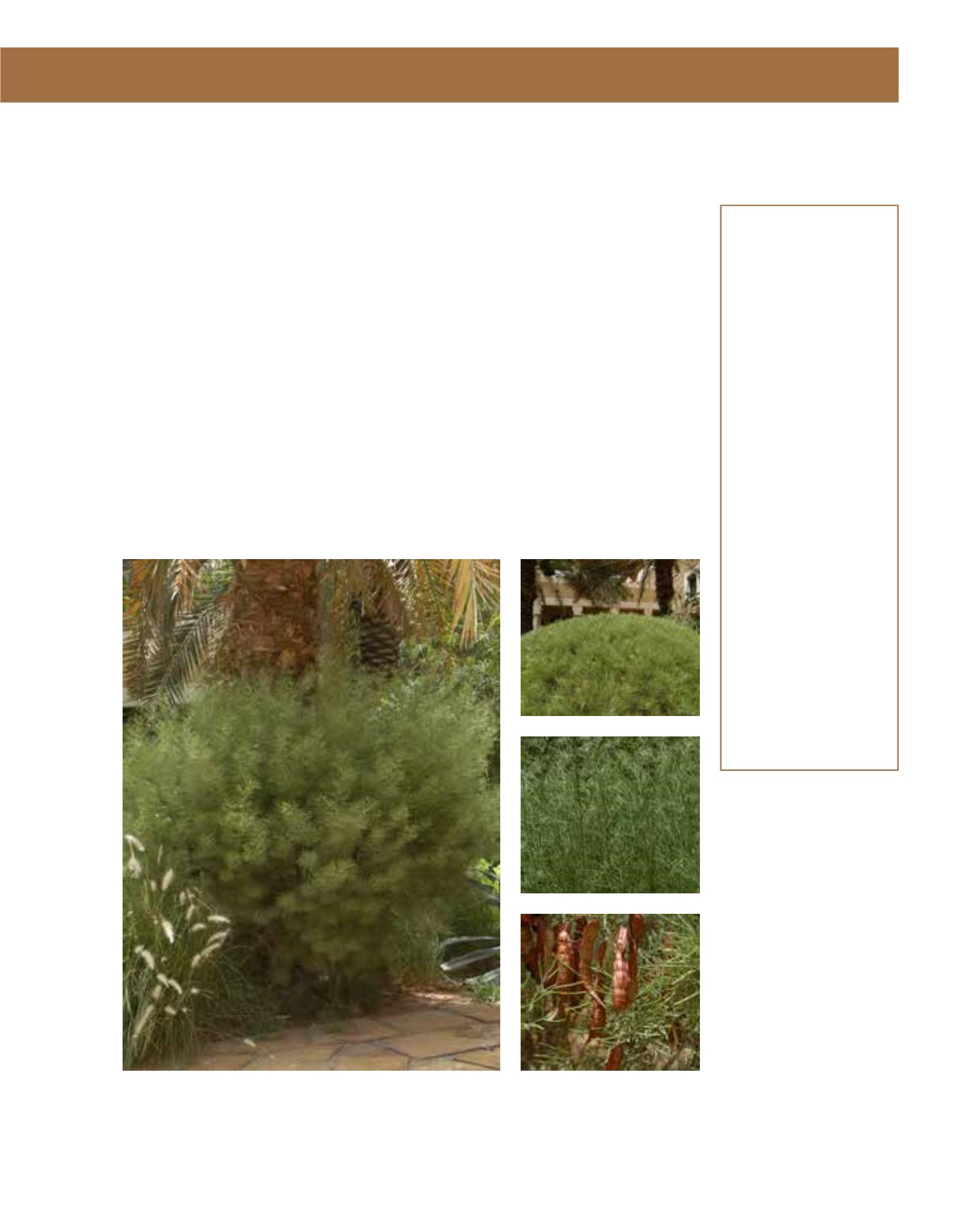

GENERAL
Origin
:
Mediterranean,
sub-tropical
Vigour
:
fairly fast
growing
Humidity
:
semi-arid, semi-
humid, very
humid
Propagation :
sowing and
pricking out,
cuttings
Maintenance :
low
CONDITIONS
Urban climate :
resistant
Dessication :
resistant
Stagnant water :
vulnerable
Irrigation
:
low
Salinity/ppm :
moderate (2000
ppm)
Hardiness
:
-9°C
SHAPE
Type
:
shrub
Height
:
2 m-3 m
Spread
:
1.5 m-3 m
Foliage
:
evergreen
FLOWER
Colour
:
pastel yellow
Size
:
1 cm - 1.5 cm
Period
:
January - April
Smell
:
scented, flower
FRUIT
Type of fruit :
pod
Fruit size
:
6 cm
The Feathery Cassia is the most desert-hardy species within this genus, and was first introduced
into Arriyadh’s residential areas in the early 1980s (CE) at the Staff Housing project for the Mini-
stry of Foreign Affairs. Its silvery, compound foliage is finely textured and soft with leaflets. It is
not shed in winters, but makes an interesting background for showy bright-yellow flower clusters
which last until spring. Each flower exudes a pleasant scent. Seeds ripen in flat, brown pods that
remain on the twigs until late summer, and may reduce the shrub’s attractiveness to some people.
Once established, this plant tolerates neglect and still performs well growing moderately to fast,
reaching 2 metres in height and width. Its shape is round at first, later developing multiple stems.
Native to eastern Australia, it is used to reflected heat, full sun and a permanent lack of water.
Any gritty soil is accepted as long as water can penetrate easily. Waterlogging is soon indicated by
chlorotic leaves, and eventually kills the plant. Pruning and clipping can be done at any time of
the year, but the plants do not warrant such attention. Frosts down to –9°C do not cause damage
to leaves and twigs, but may spoil the flowering. Feathery Cassias are propagated by cuttings.
Seeds need to be stratified by boiling water or brief fires. These shrubs look well in rock gardens
and urban design projects, and make ideal colonisers on embankments. If their growing condi-
tions are met, they make long-lived plants free of pests and diseases.
280
Senna artemisioides,
Caesalpiniaceae
Feathery Cassia
















